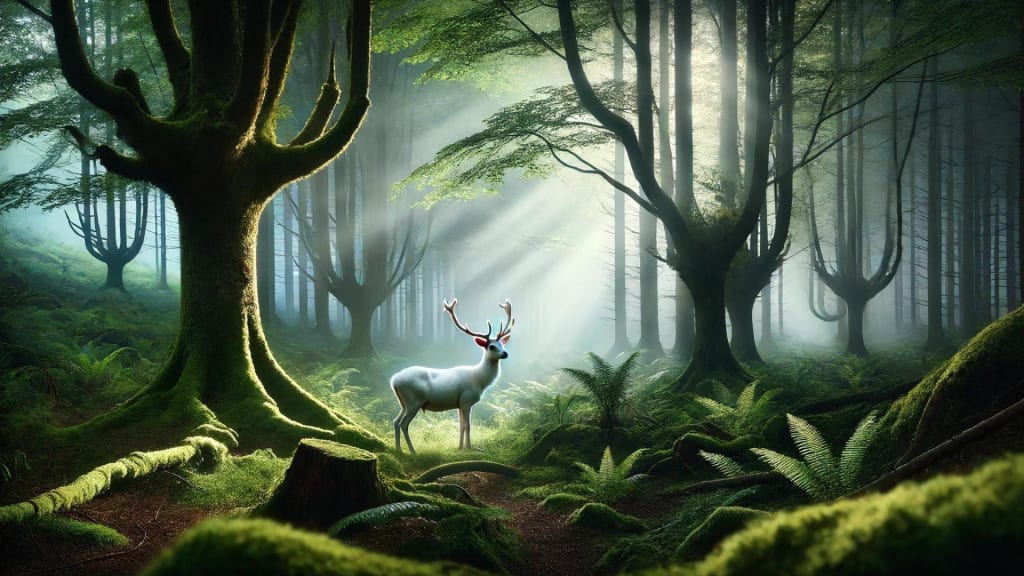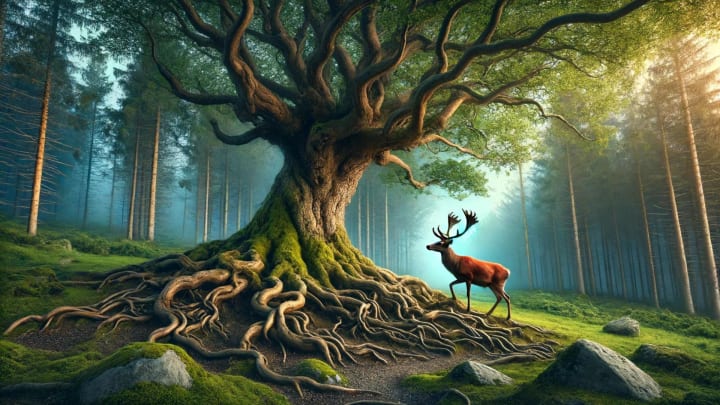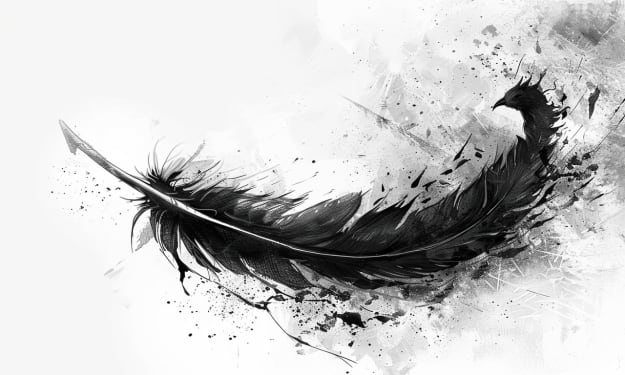Deer in Mythology and What They Symbolize in Different Cultures
What Secrets Do Deer Hold in the Myths of Diverse Cultures?

Deer have captured human imagination and been a significant part of mythology and folklore across various cultures for centuries. Their grace, beauty, and elusive nature have made them potent symbols, imbued with rich meanings and stories that reflect the values, beliefs, and aspirations of societies around the world.
This article explores the fascinating roles deer play in mythology and what they symbolize in different cultures.
The Symbolism of Deer
In general, deer symbolize gentleness, grace, and serenity. They are often associated with the natural world and its cycles, representing regeneration, purity, and renewal. Due to their alertness and swift movements, deer also symbolize vigilance and intuition.
Deer in Celtic Mythology
In Celtic mythology, deer were seen as magical creatures with strong ties to the otherworld. The Celts believed that deer, especially white stags, could move between the realms of the living and the dead. These mythical deer were often messengers from the gods or guides to otherworldly realms.
Deer are prominently featured in many Celtic tales. One famous story is that of Cernunnos, the Horned God, who is depicted with antlers. Cernunnos is the god of animals, fertility, and the underworld, and his association with deer underscores their importance in Celtic spirituality.

Deer in Native American Culture
For many Native American tribes, deer symbolize gentleness, grace, and humility. The deer is also seen as a messenger, carrying the spirit of the forest. Different tribes have different stories and interpretations, but the reverence for deer is a common theme.
The Blackfoot tribe, for instance, tells a story of a magical white deer that brought peace and prosperity. The deer is also associated with fertility and abundance in various Native American legends. It is considered a sacred animal and is often invoked in rituals and ceremonies aimed at invoking the spirit of the wilderness.
Deer in Hindu Mythology
In Hindu mythology, deer are associated with purity and spirituality. They are often depicted alongside deities. For instance, the goddess Saraswati, who represents knowledge, music, and art, is sometimes shown riding a deer, signifying the harmony between wisdom and the natural world.
The Rigveda, one of the oldest Hindu texts, mentions deer in various hymns, illustrating their sacred status. Deer are also seen in the context of the forest hermitages where sages meditate, symbolizing the serene environment conducive to spiritual growth.
Deer in Greek Mythology
Greek mythology features deer prominently, especially in the stories related to Artemis, the goddess of the hunt, wilderness, and wild animals. Artemis is often depicted with a deer or a stag and was said to protect these animals fiercely.
One of the most famous myths involves the Ceryneian Hind, a sacred deer with golden antlers and hooves of bronze. Capturing this deer was one of the twelve labors of Heracles (Hercules). The hind was sacred to Artemis, and the tale underscores the connection between the goddess and the protection of wildlife.

Deer in Japanese Culture
In Japanese culture, deer are considered messengers of the gods. In Nara, a city in Japan, deer roam freely in the parks and are regarded as national treasures. According to Shinto beliefs, the god Takemikazuchi arrived in Nara riding a white deer to guard the newly built capital. Since then, deer have been protected and revered.
The reverence for deer in Japanese culture extends to art and literature, where they are often depicted as symbols of peace, longevity, and good fortune.
Deer in Norse Mythology
In Norse mythology, deer are associated with the Yggdrasil, the great World Tree. Four stags, Dáinn, Dvalinn, Duneyrr, and Duraþrór, are said to graze on the foliage of Yggdrasil. These stags symbolize the cycles of nature and the connection between the earthly and the divine.
The presence of deer in these myths highlights their role as creatures that bridge the natural and supernatural realms, embodying the essence of life and the mysteries of the cosmos.
Practical Uses and Symbolic Presence
While deer hold a significant place in mythology, they also play a role in modern contexts, especially concerning their interaction with human environments.
For those who appreciate the beauty of deer but need to protect their gardens or property, products like motion-activated sprinklers can be very effective. These devices, such as the ones available from ZeroDeer, use sudden bursts of water to deter deer humanely without causing them harm.
Additionally, sonic deterrents, like the Sonic Fortress Pro, offer another humane way to keep deer at bay. These devices emit sounds that are unpleasant to deer, encouraging them to move away from protected areas.
These modern solutions help maintain the balance between enjoying the presence of these majestic creatures and managing the practical aspects of human-deer interactions.
Conclusion
Deer have been powerful symbols in mythology and culture, representing everything from gentleness and grace to the mystical connections between worlds. Whether revered as sacred animals or celebrated in stories and rituals, deer hold a special place in the human imagination. Their continued presence in both ancient myths and modern-day contexts highlights the enduring fascination and respect that these creatures inspire.
By understanding the symbolic roles deer play across different cultures, we gain insight into the universal themes of nature, spirituality, and the interconnectedness of life. And with thoughtful approaches to managing our coexistence with deer, such as using humane deterrents, we can appreciate these animals while also protecting our environments.
About the Creator
Enjoyed the story? Support the Creator.
Subscribe for free to receive all their stories in your feed. You could also pledge your support or give them a one-off tip, letting them know you appreciate their work.






Comments (1)
Interesting and delicious content, keep posting more now